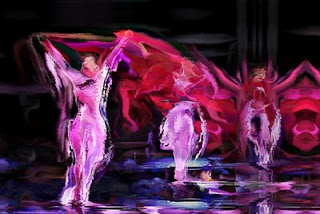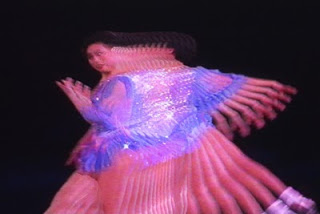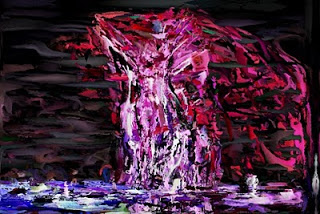
One of the cool things about Studio Artist is that it bridges the gap between 2D art programs and video processing and animation programs. What i love about this is that it allows for cross pollination between different art forms that would normally not mix.
Sometimes 2D artists wonder why they would need to use animation features. Video artist wonder why they would need advanced 2D paint features. The answer is that you can still be a 2D artist or a video artist and use the expanded functionality available in Studio Artist to explore new artistic ground within the 2D or video artistic domains you are comfortable working in.
One interesting example of this cross pollination i’ve been exploring recently involves using video processing as a way to build 2D artistic images.
A video sequence provides a sequence of inter-related 2D images that can be combined together in different ways to build 2D artwork. Studio Artist provides a great environment for 2D artists to try out this kind of exploration because of all of the advanced video animation and manipulation features it offers.

Things get even more interesting when you process a video sequence with some kind of Studio Artist effect and then use the effected video sequence as your sequence of source images to build 2D artwork. One simple approach is to work with multiple layers to combine together a series of offset frame images from a processed or paint animated movie file. Different layer compositing and opacity mix settings can be used to build your final 2D image from a collection of time offset sequential processed video frames.
The image at the top of this post is an example of using 3 different video frames grabbed from a paint animated movie sequence as source images for 3 Studio Artist layers. I used Studio Artist’s interactive translate warp capabilities to reposition the individual video frames to achieve my final spatial composition. After adjusting the individual layer opacity and compositing settings, the layers were flattened down to one layer and then further processed to achieve the final finished output image.
Studio Artist 4’s temporal image operations are also a great tool to use to build static 2D imagery out of video sequences. The center example was created by processing a video sequence with the Studio Artist temporal rank filter.
The example below was generated by processing a paint animation sequence with the Studio Artist temporal motion rank filter. This filter takes multiple video frames and processes them to create a single effected output image. For the example below a motion rank max algorithm was used. What this temporal filter does is examine a group of video frames, compare them to find the fastest movement in any given area of each video frame, and then paint the fastest movement it found in any given spatial location into the processed output image

So don’t be afraid to explore new features of Studio Artist you might normally think would not have any relevance to your particular area of artistic expertise. Cross pollination is a great way to expand your creative potential, and to have fun in the process.







